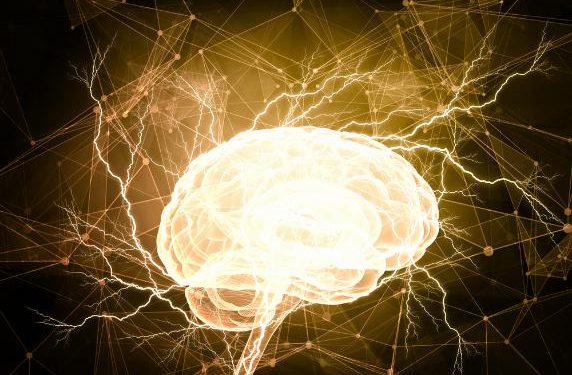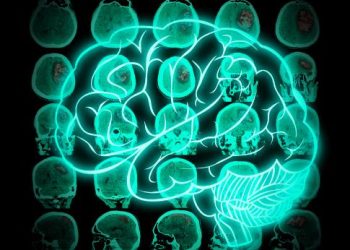A transient ischemic attack, or TIA, is like a ministroke that lasts only a few minutes. Also known as a “warning stroke,” it can signal that you’re at risk for future strokes.
A TIA can be caused by an artery that supplies the brain getting temporarily blocked by a blood clot or air bubbles. It can also be a symptom of other health conditions that are treatable, such as sickle cell disease or high blood pressure.
Symptoms
A transient ischemic attack (TIA) is an episode of stroke-like symptoms caused by a temporary blockage of blood flow to the brain. It happens when a clot forms in a blood vessel that supplies oxygen-rich blood to the brain, and usually lasts for only a few minutes. It doesn’t cause long-term damage or loss of function, but it can be a warning sign that a full stroke may happen in the near future. If you have had a TIA, be sure to watch out for a full stroke and get medical attention right away.
Symptoms of a TIA begin suddenly and go away just as quickly, typically within 24 hours. They usually start on one side of the body, such as the face, arm or leg. You may have a weakness or numbness on that side of your body. You may also have trouble walking or balance problems, and you may not understand what people are saying to you. Slurred speech is a common symptom of a TIA.
Blood clots can form in the blood vessels that supply the brain when a person’s circulation isn’t good enough to bring oxygen-rich blood to the brain. They can be caused by narrowed arteries, heart disease or problems with blood vessels in the arms and legs. People with sickle cell disease have a higher risk of having a TIA or a full stroke because their red blood cells tend to stick together and get stuck in the artery walls.
Some of the things that increase a person’s risk of having a TIA or of having a full stroke can be changed, such as smoking and having high blood pressure or cholesterol. But others, such as age or a family history of stroke, can’t be changed.
TIAs can be very frightening because they look and feel like a full stroke, and they may lead to anxiety that the symptoms will never go away. But you should treat TIA symptoms just the same as you would stroke symptoms. If you do, you can take steps to help prevent another TIA and a full stroke in the future.
Diagnosis
A TIA is like a temporary stroke, causing symptoms of lack of blood flow to the brain (ischemia). It is not a long-lasting problem, but it can be scary. Symptoms usually last for a few minutes and then disappear, indicating that the blood blockage is gone. TIAs, sometimes called mini-strokes or warning spells, can be a sign that a full stroke is about to happen. It is important to get treated right away so that the risk of a full stroke is reduced.
A blood clot that forms in an artery that supplies oxygen and nutrients to your brain is the most common cause of a TIA. This is often because of the buildup of cholesterol-containing fatty deposits called plaques in an artery, which can cause narrowing of the blood vessels (atherosclerosis). Occasionally, the clot may be caused by air bubbles or other substances that break off from the lining of the blood vessel. TIAs are also more likely to occur in people who have other concerns that put them at higher risk of having a stroke, such as high blood pressure or diabetes, or who use recreational drugs or are older than 55 years.
Your doctor can diagnose a TIA by asking about your past health and doing a physical exam. They will test your vision, eye movement, strength, speech and other things to see how your brain is working. They will also listen to your carotid arteries with a stethoscope. If you have a condition that puts you at risk of a stroke, such as patent foramen ovale (PFO), a hole in the wall of the heart that separates the two lower chambers, your doctor may recommend closing it to reduce your chances of having another TIA or a stroke.
Getting immediate treatment can help prevent a full stroke and save your life. About 20% of people who have a TIA will go on to have a full stroke, and half of those will happen within 90 days of the first TIA. Getting treatment quickly can lower your risk of having a full stroke and help you return to your normal life activities as soon as possible.
Treatment
A TIA is often a warning sign of a full stroke, and it’s important to recognise the symptoms and seek emergency care immediately. Up to 20% of people who have a TIA experience a full stroke within 90 days and half of those happen within the first two days after a TIA.
TIAs usually happen because of a temporary disruption in the blood supply to part of the brain. This may be because of a build-up of fatty deposits in the blood vessels (known as atherosclerosis) or it may be due to a blood clot. Symptoms, which usually last for only minutes to a few hours, are similar to those of a stroke and include weakness or numbness in the face, arms or legs. They also include difficulty speaking or understanding what others are saying.
The treatment for a TIA depends on what caused the attack and your risk factors. It’s important to know that while some of the causes of a TIA are uncontrollable, many can be prevented or reduced. For example, getting regular yearly checkups with your primary care provider can help you spot problems like high blood pressure and diabetes sooner. You can also stop smoking, exercise regularly, and eat a healthy diet to lower your risks.
If a TIA is due to an underlying condition, such as atrial fibrillation or blood disorders, you’ll probably be treated with medications to prevent a clot from forming again. Depending on what’s found, you may be given aspirin, heparin, warfarin (Coumadin), or direct-acting oral anticoagulants such as apixaban (Eliquis). If you have a blocked artery in your neck, you might need surgery to remove it.
A TIA can be frightening because its symptoms are so similar to those of a stroke, but it’s a good reminder that you should take stroke prevention seriously. The good news is that most TIAs don’t lead to any lasting damage or permanent disabilities. But it’s still a good reason to get help as soon as you can — especially if you’ve had one TIA before. That may mean you’re at higher risk of having a second TIA or stroke in the future.
Prevention
A transient ischemic attack, or ministroke, occurs when a temporary blockage of blood flow to the brain causes symptoms similar to those of a stroke. TIAs last only a few minutes and don’t cause long-term damage, but they can be warning signs that a full-blown stroke is likely to occur. If you or someone you know has a TIA, get help immediately, even if the symptoms disappear.
A TIA can be caused by a blood clot that formed elsewhere in the body and traveled to the blood vessels supplying the brain, or it may be caused by fatty material, air bubbles or a hemorrhage. Symptoms of a TIA include difficulty walking or balance problems, numbness or weakness in the face, arm or leg (usually on one side), and slurred speech. The symptoms usually come on suddenly, last a few minutes to a few hours and then disappear.
TIA is considered a medical emergency, and it’s important to seek help right away because every minute counts when trying to prevent a stroke. Depending on your symptoms, you might need tests such as an electrocardiogram or magnetic resonance imaging (MRI). You also should be evaluated for other health issues that increase your risk of a stroke. These include high blood pressure, diabetes, heart disease and sickle cell anemia (a condition in which your red blood cells develop a sickle shape and stick to the walls of your arteries).
The best way to prevent a TIA is to control your risk factors. These are things you can do or avoid that affect your chance of having a stroke, such as smoking, exercising regularly and eating a healthy diet. Your healthcare professional can help you lower your risk factors by changing your lifestyle and managing your health conditions. Your healthcare professional may recommend medications such as antiplatelet agents or blood thinners, which are drugs that reduce the risk of clots forming in your arteries and leading to a stroke. In addition, your healthcare professional may suggest lifestyle changes such as weight loss and exercise to improve your health.









